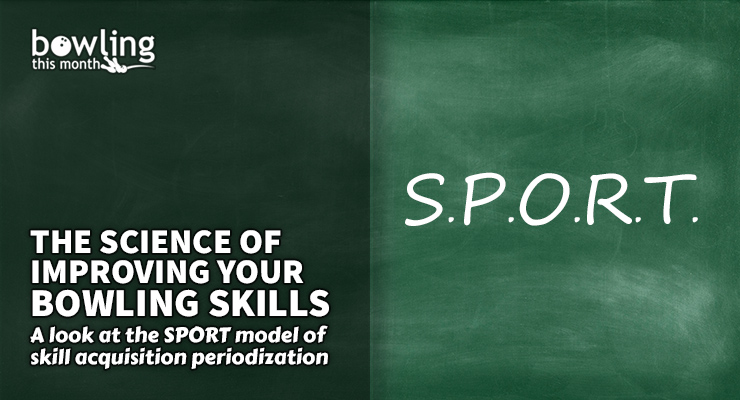As a coach, I constantly review training techniques in other sports as well as review sport science research to improve my understanding of training methods and practice effectiveness. This commitment to looking outside of our sport expands my thinking and provides insight into evolving sport science research. I have been equally committed to sharing these ideas with Bowling This Month’s readers over the past 15 years.
Periodization is a well-known training process where you design training strategically by varying the volume, intensity, and frequency. In short, periodization involves normal training, periods of overload (when you increase one or more of volume, intensity, and frequency), taper (when you reduce volume and frequency), and a recovery phase, normally after major events. A significant body of research has revealed that human sports performance improves with four weeks of overload followed by 10 to 14 days of tapering running up to a major competition.
Skill acquisition periodization (SAP), or periodization of skill training (PoST), is an evolving research area in sport science. To illustrate, research is beginning to focus on the impact of specificity, overload, and tapering on specific skill development in elite high-performance sport. But, historically, there is nearly no research base on the impact of load, or the amount of training, on skill acquisition. We are at the beginning of an exciting time for sport science and skill acquisition research on elite-level high performers.
In my opinion, skill acquisition periodization holds much potential to take skill training to a higher and more effective level. In this article, I share Damian Farrow and Sam Robertson’s (2017) five-domain SPORT model and provide examples of how we can utilize these five domains in improving skill training in bowling. As the authors emphasize, “Skill acquisition research and practice can benefit from a periodization framework to provide a structure for the longitudinal skill monitoring and development of athletes.”
The SPORT model: skill acquisition periodization
Farrow and Robertson (2017) developed a five-domain skill acquisition periodization model, which goes by the acronym of SPORT, for high-performance athletes. SPORT refers to specificity, progression, overload, reversibility, and tedium. I will discuss each of these domains, as well as align each to bowling. This will enable coaches and athletes to measure skill acquisition in a more ...
This article is only available to Bowling This Month subscribers. Click below to get instant access to this article and all of our other premium instructional content.
Subscribe to Bowling This Month
Already a Bowling This Month subscriber? Click here to log in.
Image Credits: Chalkboard background image (©iStock.com/Rawpixel) is licensed for use by BTM and is the copyrighted property of its original creator.
